PPC
FOR B2B
PPC Lead Generation
Some say that the B2B buying process has changed drastically and that securing qualified leads is increasingly difficult. We are not that agency.
We are the agency that believes that the level of noise is the issue, and we know how to cut right through it. Running multi-channel PPC campaigns is indispensable nowadays, especially when your goal is to boost lead generation in order to build your sales pipeline.
Marketing Envy specializes in ABM-based PPC lead generation and has a dedicated team of Google, Facebook, and LinkedIn alumni with (not too many ;)) years of experience. We research, devise and implement unique strategies for our clients, because we don’t believe in a “One Size Fits Them All” approach.






Aqua Security, CyberBit, CyberInt, Vulcan, OHT, Magic Software, Sarine, PlainID and CoolAutomation, are just a handful of MQL-happy clients who we work with


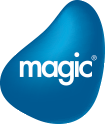



We can work wonders for you too. Let’s talk.
Go to our packages page for more details and pricing
How to Use Paid Media to Boost Your Inbound Marketing Funnel
The popularity of inbound marketing is off the charts. In fact, when HubSpot surveyed over 3,400 marketers for their “State of Marketing 2022″ report, 66% of B2B Marketers reported they actively invest in SEO and 95% are investing in short form video video this year. While there’s no doubt that the popularity of inbound marketing is well deserved, we find that too many companies are skeptical about the investment in PPC.
Many still believe that PPC is synonymous with the “old outbound” marketing, when disruptive banners would jump out at us and interrupt our experience. Well, that could still be the case, but only when PPC and inbound marketing strategies are poorly integrated. An effective inbound campaign requires you to study your audience’s needs and create relevant content for each stage of the buyer journey. Supplementing what you know about your audience with PPC will amplify your inbound efforts.
Think About

Inbound Organic
Leads
Supercritical long term foundation layer, patience is your salvation.

PPC
Paid Leads
Budget flexibility, quicker or more attributable ROI.
What is ppc?
Pay Per Click (PPC) campaigns are paid online advertising, where you pay a fee every time a person clicks on your ad. PPC ads use Cost per Click (CPC), Cost per Acquisition (CPA), or Cost per Lead (CPL) models to decide how much you’ll pay each time.
Simply put, this is payment for audiences to engage with your brand and contetn as opposed to relying on organic means. There are different types of PPC that is run on different platforms and channels.
Key PPC Channels
LinkedIn is the primary social media channel for B2B advertising. Instead of targeting just by interests, you can target by company, position and more, making it a highly attractive channel for those looking to market to businesses. There are several different types of ads on LinkedIn

LeadGen ads
What’s clever about these ads is that the moment a user clicks on your ad they are taken to a form that automatically populates with the users profile data. They can then submit the form with just one click.

Sponsored Content
You can use sponsored content to quickly get word out about any recent post. Write a post organically and simply promote it in the LinkedIn feed across all devices – mobile, desktop and tablets.

Message Ads
Previously called InMail Message Ads send a message of your choice to an audience. You can define a general target audience or target specific positions in specific businesses. They are a relatively low cost advertising option.
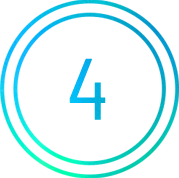
Retargeting
Ever find your prospects starting to fill out a form and then abandoning it? or clicking through to your website and bouncing? Introducing LinkedIn retargeting…… Track these users and bring them back with personalized content based on actions they’ve taken with your brand.

- Search
Google Search is where it all began. Long
before Facebook ads were a thing, and well before LinkedIn ads became popular, Google was THE place to market online. Search ads are so great because they can be used to target someone who’s already looking for what you offer.
These days they’ve gone fancy allowing all types of extensions to an ad, meaning sometimes your ad can take up a large amount of the SERP. Ad extensions vary from sitelink to location to call extensions.
- GDN
Ya know those banner ads you see following you around when browsing the web? You’ve just looked at a cybersecurity solution and the company ads are following you, enticing you to jump on a demo? Those are all part of the Google Display Network. The GDN is a misunderstood channel. Often it’s pushed aside as a costly money sucker, BUT it can be an excellent tool for awareness building and retargeting people who’ve left you’re site before converting.

- Facebook is often overlooked as a B2B channel and it’s
true, LinkedIn can often target businesses more effectively than Facebook. However with over 2.8 billion active users Facebook can has also proven itself to be a useful tool in awareness campaigns and for Retargeting. - Retargeting
You can retarget on Facebook people who’ve been to your page or site. It’s another channel for people to see your brand and when people spend so much time on the site it’s one worth considering

- Twitter moves fast. Though smaller than Facebook
with about 330 million monthly users, it still offers many advertising options and it’s one to consider. - There are several ways to target on Twitter from keyword targeting to tweet engager targeting (when you retarget people who’ve previously engaged with your tweets) ro tailored audiences. Although often pushed to the back of the line, Twitter’s selling point is it’s low cost vs. other platforms.
PPC will also help you with
Target The Right People
Engage Prospects On Every Channel While Building Relationships
Significantly Scale Up Your Inbound Efforts - Fast!
We created this page to help you better understand what your PPC options are, how it should be integrated with inbound marketing, when you should be doing what and how to calculate a meaningful ROI from your activities. Enjoy 🙂
AWARENESS STAGE
WHICH KPIS SHOULD I TARGET & TRACK?

For Blog Posts
- Click through rates (CTR). You want as many people
as possible reading your content. - Time on site/no. of pages – How long did people stay on your site, how many pages did they read?

For Videos
- Number of views. Here, too, you want as many eyeballs on your content as possible, but it will usually be done on the platform itself and not on your website.
- After working with countless B2B tech companies, our favorite channels to promote awareness stage blog posts and videos are:

Blog posts are easier to create than videos, so start with that. Your number one KPI here is the number of people who click through and read your blog post. Start with an integrated content plan that includes as much varied content as possible, such as videos, blog and ebooks/whitepapers etc.

Promote Your Videos on
Linkedin, Youtube and Facebook
On both platforms, begin by targeting your personas’ interests (we have more info about this towards the end of the page).
Focus on how many people viewed your video and not the number of clicks. Since the goal is awareness, more viewers = more exposure.
HOT TIPS
- Get the best results when you upload your video directly to the Facebook/LinkedIn native video platform as opposed to through YouTube. If you do, it will automatically play as the user scrolls past it.
- Most people will watch the first 5-10 seconds of your video so make sure to emphasize your message at the beginning of the video.

How to Measure
Awareness ROI Over Time
- Are you seeing more returning visitors to your site?
- Look at organic traffic volume to your site over time, is it rising?
Analyze brand recognition. Are more people searching your brand name on Google or mentioning you (hopefully, in a positive way) on social media?
Are more people signing up for your blog or following you on social channels?
Yes, likes, follows etc.

How to Measure
Awareness ROI Over Time
If you’re introducing a new type of solution, do you see an increase in Google searches and social media mentions related to your innovation?
Track how many people search for the solution you offer, or the challenge you solve. Notice love from other companies. Are you getting more mentions and links from other websites than you did before your campaign?
Track how many people move on to the next stage of your funnel, where they seriously consider what you have to offer, and start converting into leads and customers.
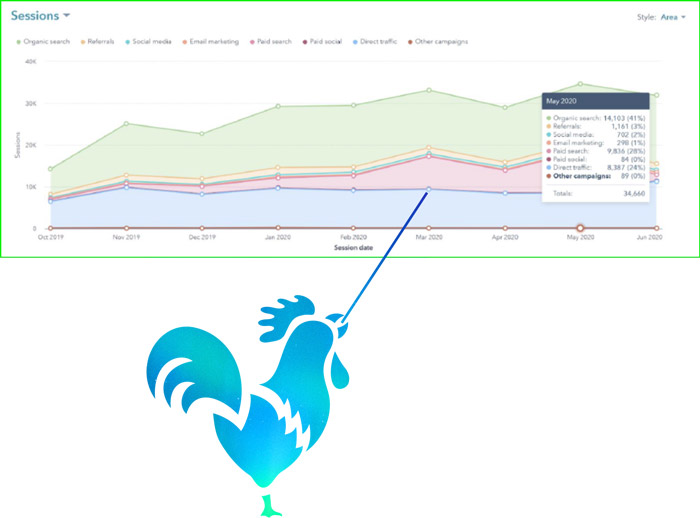
PPC FOR CONSIDERATION STAGE
WHAT KINDS OF CONTENT
SHOULD I PROMOTE on Paid media?
Moz Advises
SUITABLE TYPES OF CONTENT
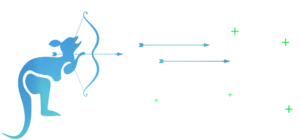
WHICH KPIs SHOULD I TARGET
& TRACK on Paid media?
For this stage, continue with LinkedIn and Facebook (mainly for site visitors but depending on what your business does), but replace YouTube with Google Search Ads. Google Search Ads will allow you to show your ads to people who are actively looking for relevant products and solutions that you offer.

WHICH CHANNELS
SHOULD I USE?
At this point, it’s best to focus on Cost Per Lead (CPL), and especially cost per Marketing Qualified Lead (MQL or SQL in some cases).
Although most leads will be useless to you when you first start the campaign, the more you practice and learn how they convert further down the funnel, the easier it will be to identify valuable MQLs, convert more prospects and get a higher return on your investment.
Promote Your Consideration Stage Content on Linkedin

Create separate campaigns based on job titles and groups that prospects belong to, the skills they listed on their profiles, alongside the industries and their professional seniority.

Use Account Based Marketing (ABM). Upload a list of companies you’re targeting and create dedicated campaigns for the relevant roles within these companies.
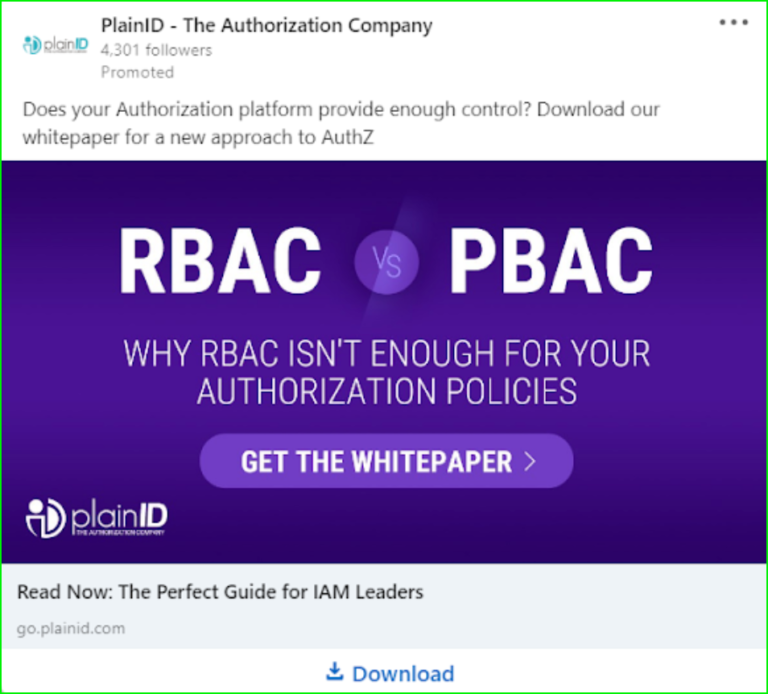

- For example Anna has filled in a form.
Her status is changed to subscriber and she can now be retargeted.
HOT TIPS
Test LinkedIn’s lead gen ads, where you can encourage people to convert without leaving the platform.
For more LinkedIn tips see here.

- You can also now retarget on LinkedIn,
targeting people who have viewed your videos or started filling out a form, in addition to those who have visited your website.
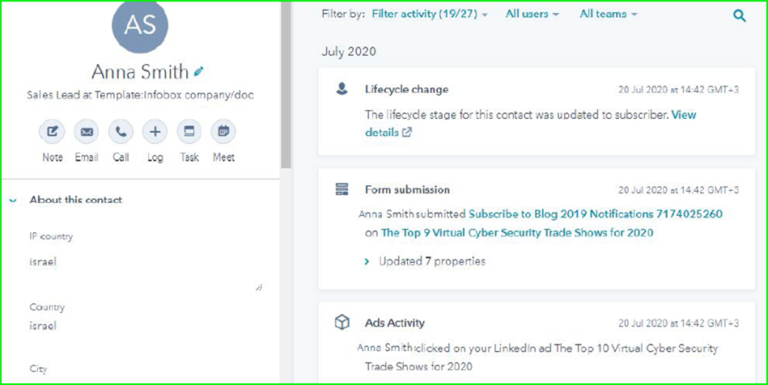
- In each campaign, promote 3-5 different
content pieces, as LinkedIn limits the amount of exposure each content piece receives. - Use LinkedIn’s lead gen ads to encourage people to sign up directly from within the ad. This is a much simpler process all around and might reduce lead quality, but the drop in price is likely to result in cheaper qualified leads overall, so it’s definitely worth a try.
PROMOTE YOUR CONSIDERATION
STAGE CONTENT ALSO ON FACEBOOK
Target prospects based on relevant interests and job titles.
- Create targeting audiences based on your existing MQL
contacts as well as look-alike audiences. Then narrow it down further with interests. For example, you can target high potential leads with content that will drive them down the funnel into qualified leads. Next step is to then take these qualified leads and create a look-a-like audience of them in Facebook to generate even more high quality leads. - We recommend testing 3 different ad creatives.
Test sponsored ads on Facebook’s news feed on mobile vs. desktop. Also try Instagram and the audience network for extra reach.
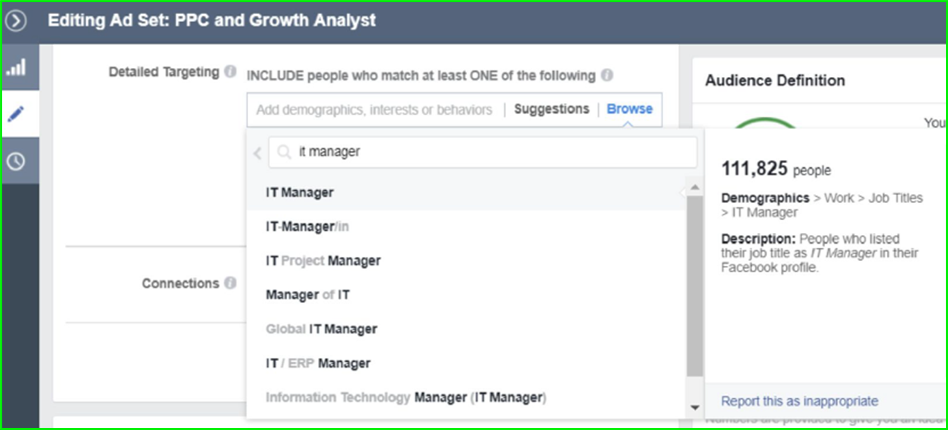
Desktop - News Feed

Mobile - News Feed
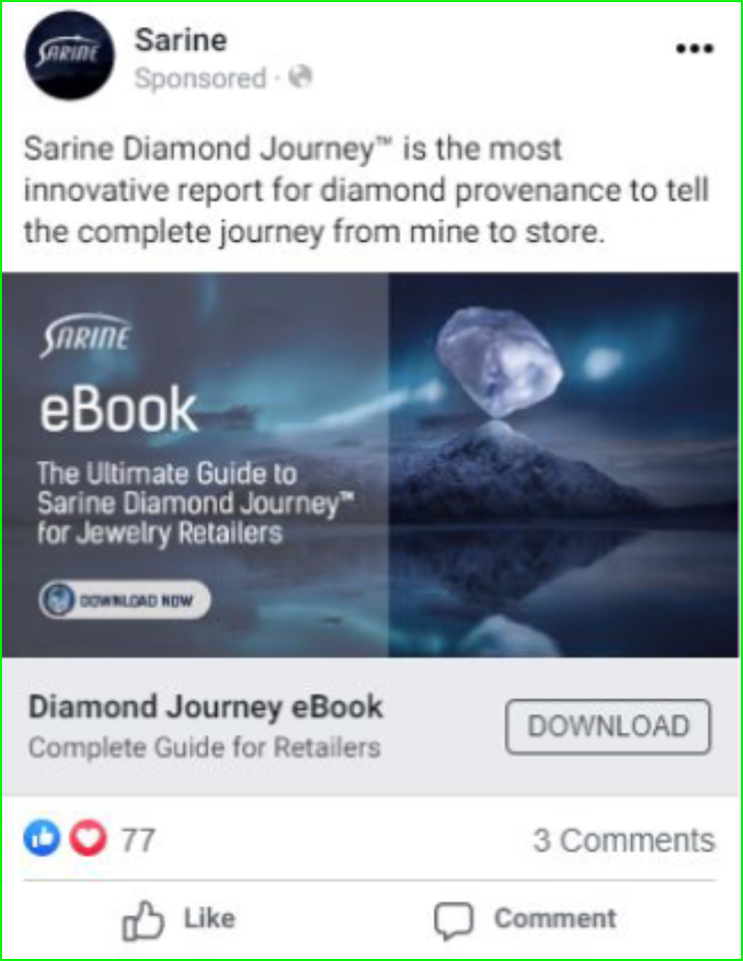
- Targeting Mobile and Desktop newsfeed placements to collect data for later optimization according to placement performance.
- Remarketing – targeting people who have already shown interest in your offer, but then walked away. For example, people who have signed up to your email list, but haven’t opened your emails recently.
Note: Facebook and LinkedIn offer remarketing options that allow you to exclude people who have already converted. For example, you can skip people who have already requested a demo, signed up for a free trial or who are already paying customers.
Facebook Targeting
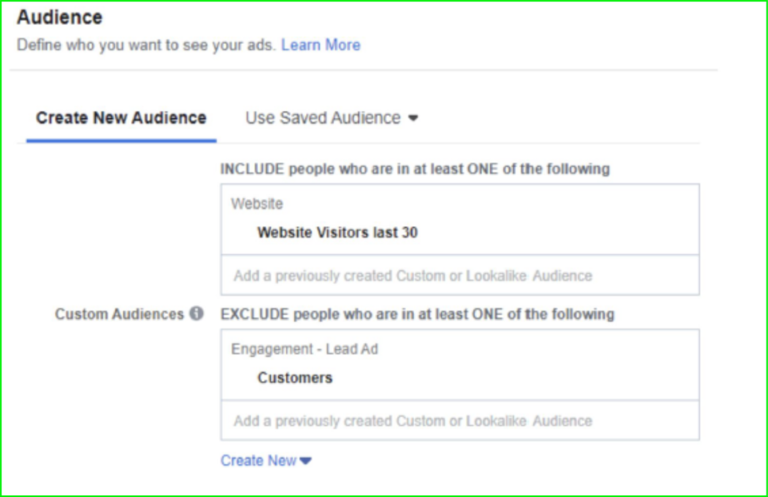
Mobile - Stories
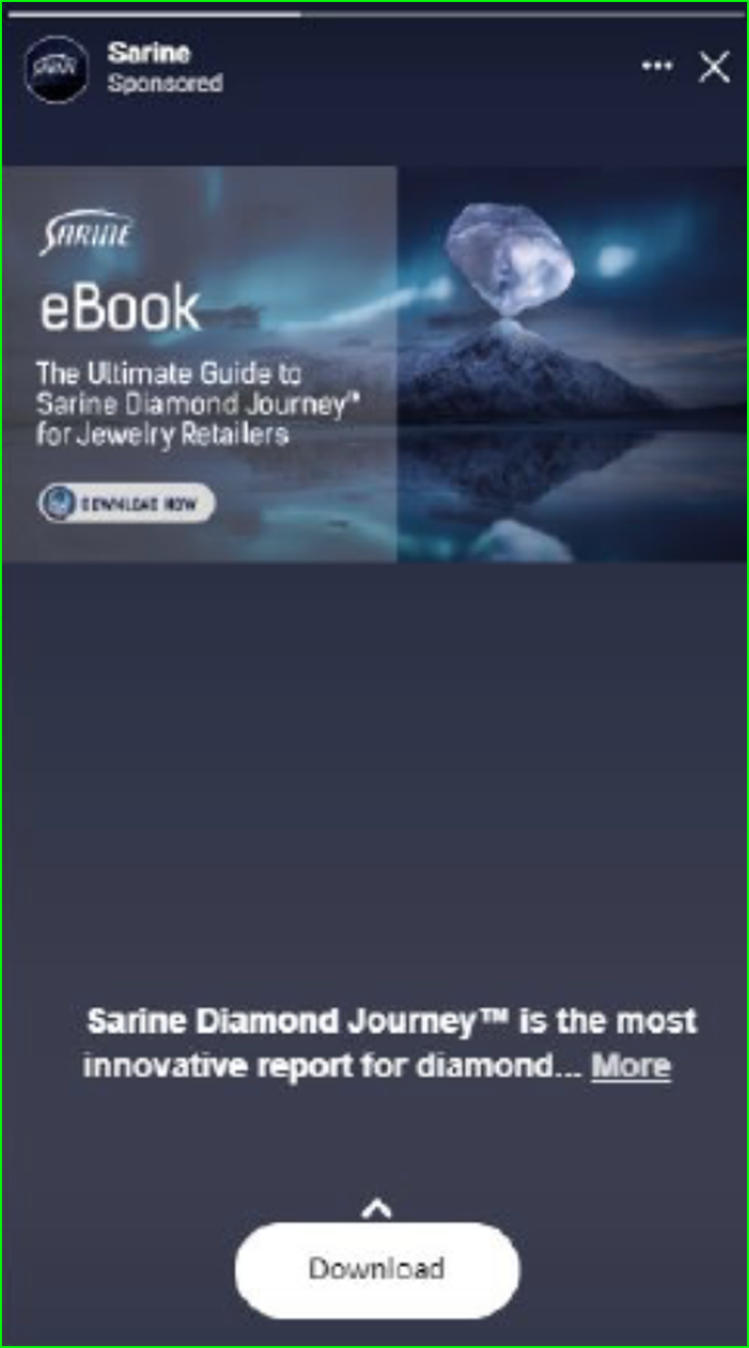
Linkedin Targeting
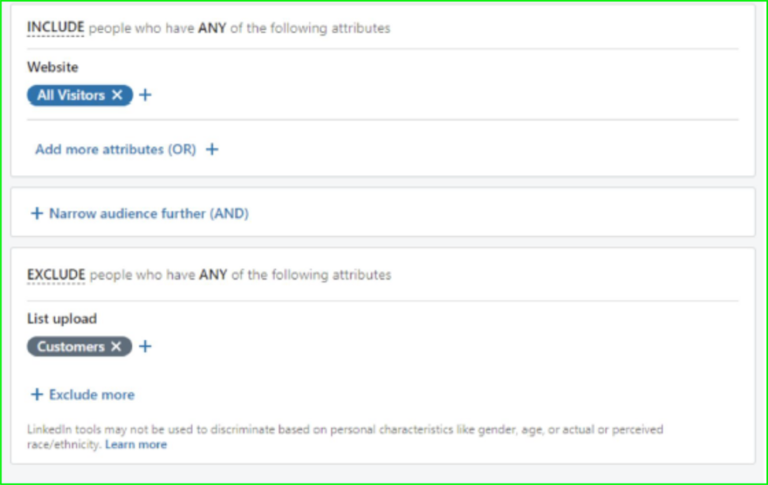
PROMOTE YOUR CONSIDERATION
STAGE CONTENT ALSO ON Google Ads
Before running your Google Ads campaign, use Google’s ad preview tool to see what content appears for related search results. Are they more informational (like Wikipedia) or more commercial (like vendor websites)? This will help you plan your content and ad copy accordingly.
Use questions as ad copy, suggesting that the answers await inside your whitepaper or other gated content.


Example: What are the security challenges for virtualized containers? Download the whitepaper to learn more.
When setting up your campaign to promote gated content like whitepapers, it’s best to include “general”, information intent keywords rather than “product specific”. According to WordStream, this means your ads will show up in “searches performed to answer questions or learn something.” For example, “Top new (and updated) features in PPC for B2B.”
PROMOTE YOUR CONSIDERATION
STAGE CONTENT ALSO ON Google Ads
The best way to measure the effectiveness of your consideration campaign is to see how many contacts achieved MQL status. And ultimately, overtime, how many converted to Sales Qualified or even to Opportunity.

PPC FOR DECISION STAGE
According to Target Marketing, “now you’re getting to the point where offers and follow-ups start making a whole lot more sense. You’ve interested your prospect, and now it’s time to nurture that interest with rich content that answers very specific questions… with a specific offer for a service.”
What Type of Content Should I Promote on Paid Media?

Now is the time for your content to answer the question “Why should I buy yours, and why now?” To answer without being too salesy, we recommend promoting bottom funnel content:
- Case studies
- Product comparisons
- Demos and free trials
We’re going to stick to Google Ads, Facebook and LinkedIn during this stage as well.
We’re going to stick to Google Ads, Facebook and LinkedIn during this stage as well.
Which KPIS Should I Target & Track for Paid Media?
Focus on commercial intent based keywords, like “buy cybersecurity software” or “top 10 providers.” Keywords without clear intent will not drive leads so save those for awareness or consideration stage.
Promote your decision-driving content on google ads
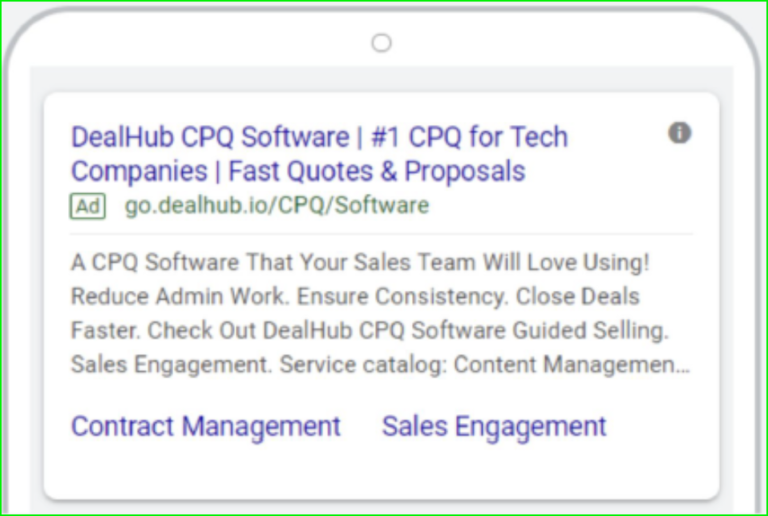
This is the time to track both:
- Sales qualified leads (SQL*)
- Opportunities opened
*SQLs are contacts who your sales team have accepted as worthy of a direct sales follow up.
HOT TIP
- Use remarketing for search; show demo and free trial ads to people who have already been on your site and are not searching for relevant terms. Since they already know you, you can use much broader keywords that aren’t necessarily intent based.
PROMOTE YOUR CONSIDERATION
STAGE CONTENT ALSO ON Google Ads
Ads leading to landing page

- Remarket to people who have signed up to receive
your eBook or whitepaper in the consideration stage - Create an audience based on your MQL contacts and
build look-alike audiences on Facebook and LinkedIn based on interests, job titles and ages - Remember to exclude your SQL list, and test 2 different
ad creatives, at least
HOT TIP
- Use Linkedin’s Website Demographics to segment your remarketing audience per vertical, seniority and more…
Landing page following ads

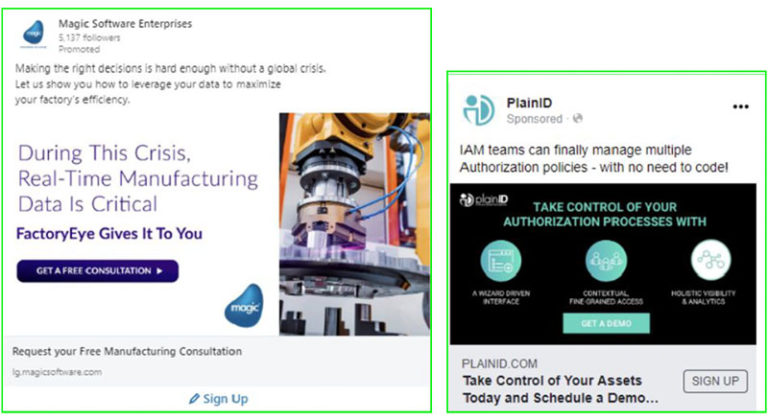
How To Measure Decision Stage ROI Over Time
Similar to the consideration stage, ROI will be measured by the amount and quality of conversions, including:
- The number of demo requests or free trial sign ups, ֿ
as well as how many of them convert into SQLs, opportunities and sales - The number of direct sales you make
- Demo cancellation rate
- Lifetime value, upsells and advocacy
DELIGHT!
Delighted customers turn into your brand promoters, if they are happy with their experience, then they share their delight and contentment with. What we are looking for at this stage is transforming a paying customer into a brand evangelist!
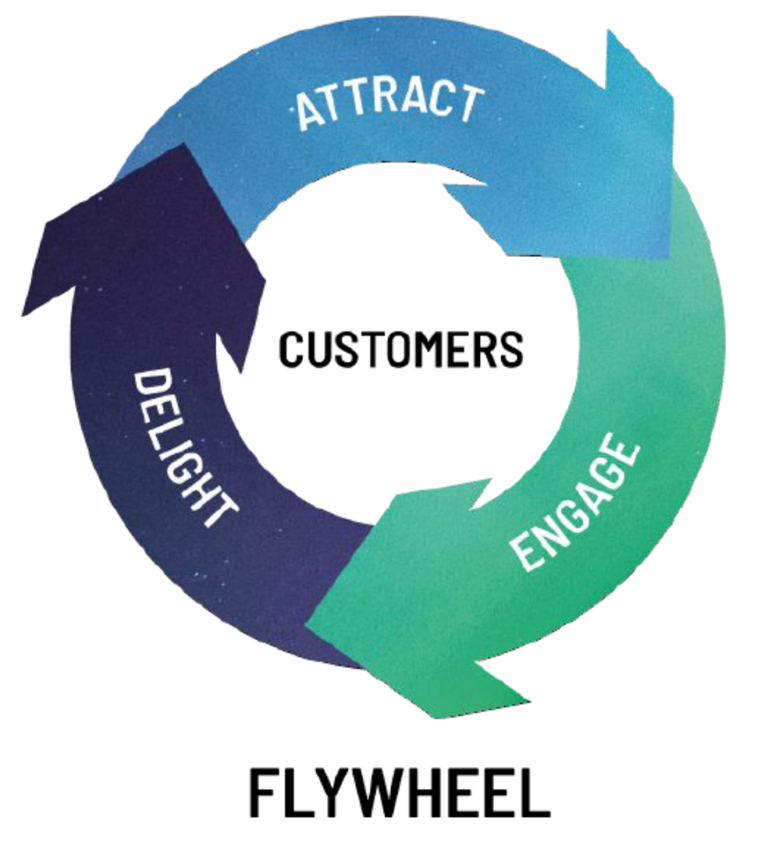
WHAT TYPE OF CONTENT SHOULD I PROMOTE on Paid media?
This is the time to focus on content that encourages interaction and feedback.
You can use surveys to improve your offering, tutorials for customer success, webinars and landing pages to explain to customers what’s in it for them to give you a warm referral.
- Surveys
- Tutorials
- Referral program
WHICH Paid MEdia CHANNELS SHOULD I USE?
At this stage, we recommend using only social channels as the goal is engagement and reach. Drive your clients and advocates to your offered referral program on LinkedIn and Facebook, and promote shareable content as infographics, awards and PR mentions you’ve received.
WHICH KPIs SHOULD I TARGET & TRACK on Paid media?
- Shares on social platforms
- Referrals
HOW TO MEASURE DELIGHT (EVANGELISM) STAGE ROI OVER TIME
There are many ways you can measure evangelism ROI over time, including:
- Your average customer LTV (lifetime value)
- Your average upsell rate
- The percentage of customers that agree to
participate in customer case studies - The percentage of customers who refer
additional customers - Customers cheering for you online, for example,
high email open rates, a rich flow of thank you tweets, 5 star reviews on industry websites etc.
BONUS TIPS TO HELP YOUR PPC CAMPAIGNS SUCCEED
Bonus #1
HOW TO FIND YOUR
TARGET AUDIENCE
How to find your ideal customer on Linkedin

- Target related groups
- Target related skills
- Upload a list of companies you’d like to target
If you’re targeting the C-suite, target according to job title in order to reach people with significant experience in the field - Retarget people if they have watched your video or
started to fill out a form, but didn’t finish
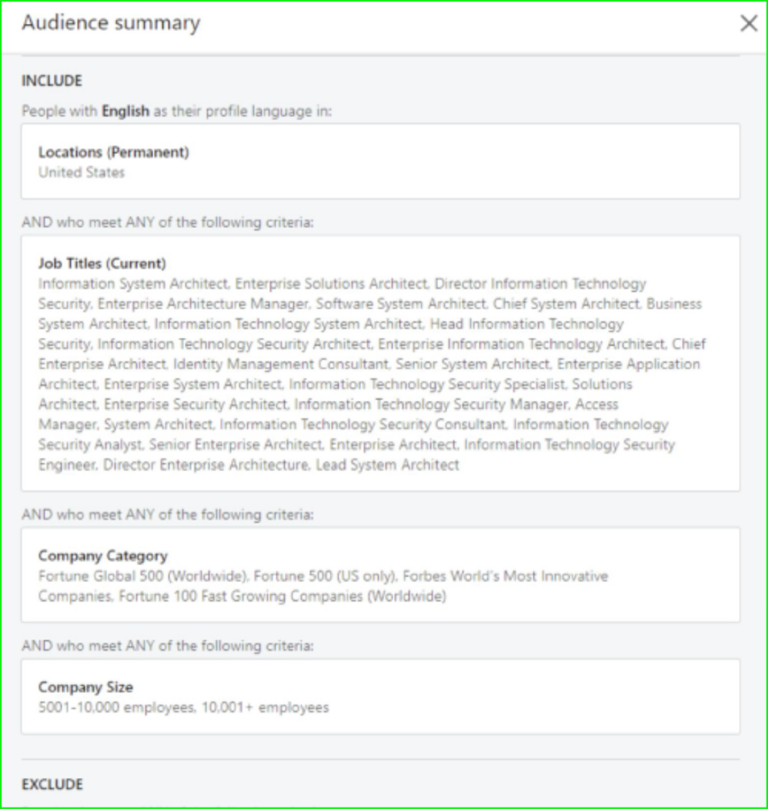
LinkedIn limits the exposure each blog post gets. To overcome that, promote more than one
post at a time.
HOT TIP
- Hot tip: Allow people to follow your company page through the ad. Unlike other platforms, LinkedIn still shows organic content to your followers, so enjoy this while it lasts!
HOW TO FIND YOUR TARGET AUDIENCE ON FACEBOOK
Create a lookalike list based on your website visitors and email list (only choose the qualified leads).
- Narrow down your look-alikes by interests based on
your persona. You can try targeting by job title or field of study, but too many people don’t update their current position or company on Facebook. Targeting by interest will be done based on their Facebook interactions with people and brands, so that’s usually best. - Narrow your audience by age and gender. For example, if
you’re targeting the C-suite, chances are most people you’re targeting are at least 35 years old. - If your look-alike audience is still too big, try to narrow it
down geographically to areas where your ideal customer is most likely to live. For example, if your prospect is more likely to live in the suburbs, you can exclude the big cities in the area. - Always exclude people who’ve already visited your site and
converted into leads.
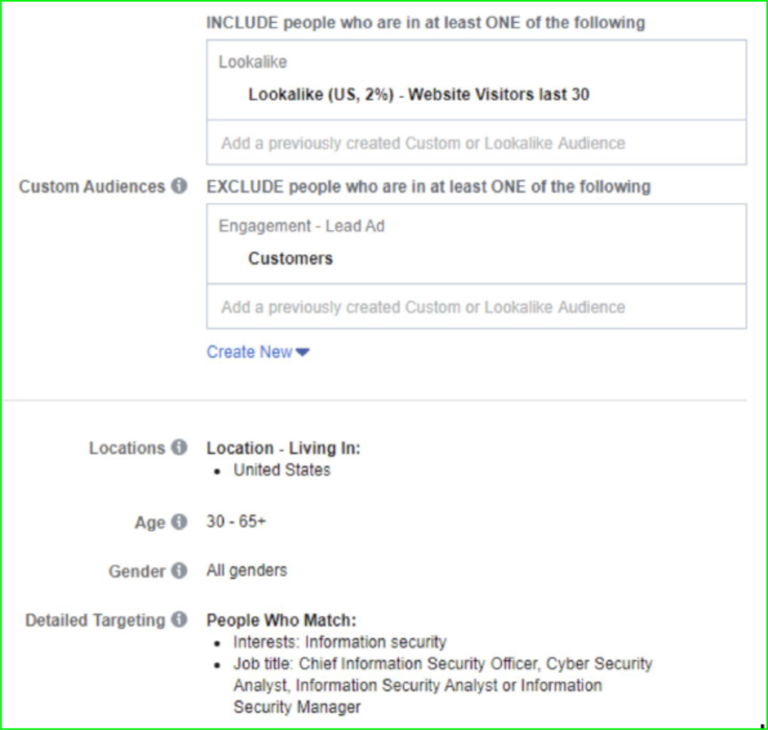
HOT TIP
- If you don’t have data to create look-alike lists (say, you haven’t had many visitors to your website yet), you can target people who’ve joined relevant Facebook groups or followed top industry Facebook pages.
HOW TO FIND YOUR TARGET AUDIENCE ON YOUTUBE
If you don’t have data to create look-alike lists (say, you haven’t had many visitors to your website yet), you can target people who’ve joined relevant Facebook groups or followed top industry Facebook pages.
- Competitors – Use your competitors’ names and how
people are searching for them on Google search. You can add their URL and if the audience is too large, you can add specific pages or keywords that are more relevant to your product (e.g. Marketing Envy inbound) - Core keywords – Use a select group of keywords, just
like on Google search. You can then target people who are looking for your product/service and show them your content on Youtube. - Retargeting – Retarget people who have visited your
site or interacted with your content.

Bonus #2
ADVANCED TARGETING ON SOCIAL MEDIA PAID CHANNELS AND OTHER TIPS TO HELP YOUR PPC

1. BIDDING

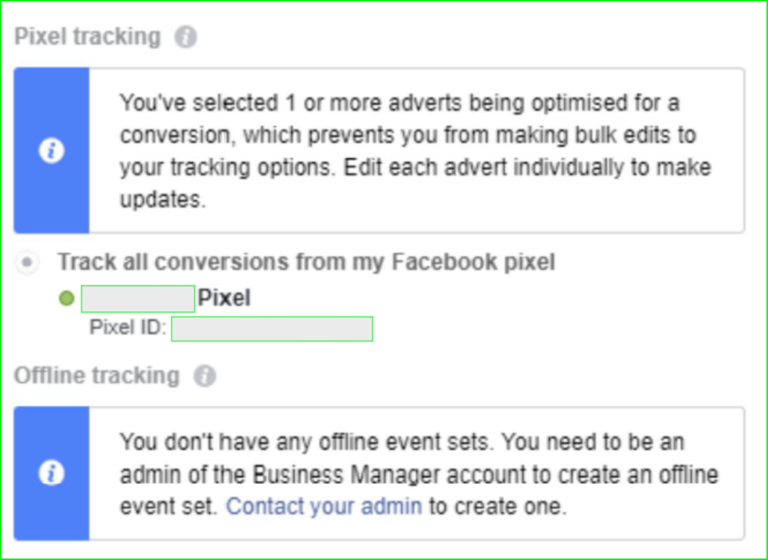
2. MEASURE LEAD DATA
Make sure that you measure leads using the platform’s pixel. The data shows engagement actions up to 30 days after a click, so check both the click conversions and post impression conversion all the time.
3. CREATE DIFFERENT ADS FOR THE SAME CONTENT PIECE
Test different headlines and images, then invest more in what works best.
4. MEASURE THE QUALITY OF VISITS
Evaluate time spent on each blog post or video, additional content viewed on your website, total time spent on your website, and whether or not you got new subscribers or customers (depending on their stage in the buyer journey).
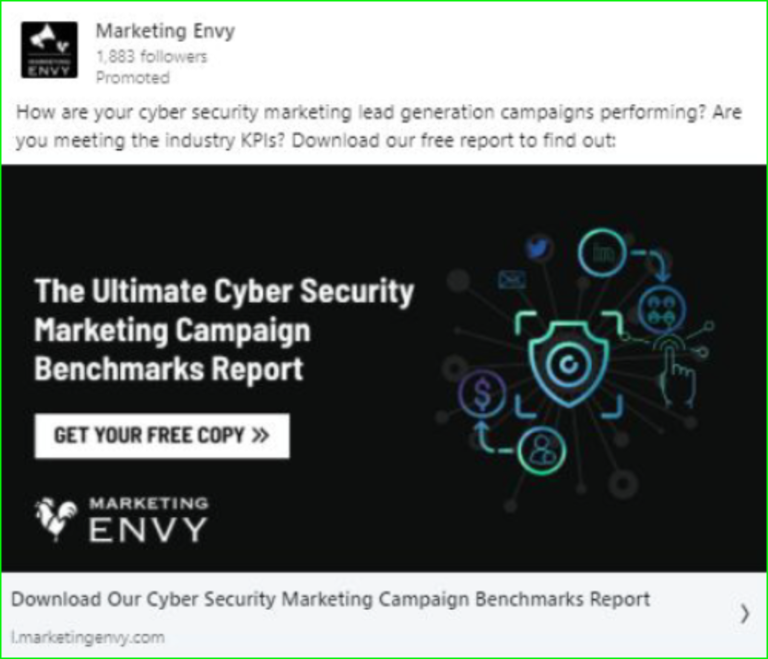
5. OPTIMIZE IMAGE SIZE
To maximize appearance on social feeds.
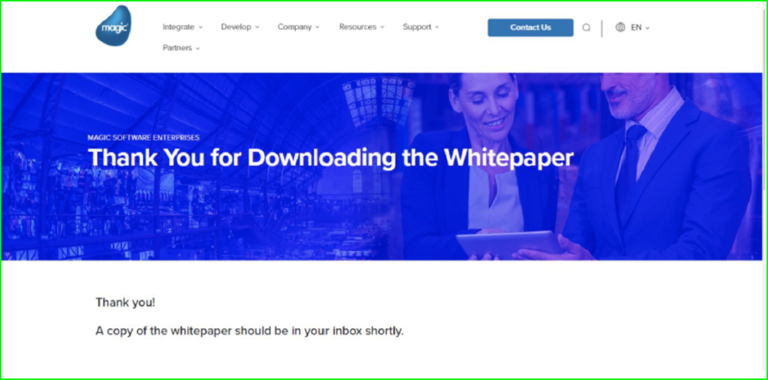
6. TEST RESULTS ON BOTH MOBILE AND DESKTOP
Some audiences will click your mobile ad by mistake, and you’ll get low quality visits in return, whilst other audiences check social media on the road, and won’t see most of your desktop ads.
7. TRACK AND MEASURE YOUR SUCCESS WITH THANK YOU PAGES
Evaluate time spent on each blog post or video, additional content viewed on your website, total time spent on your website, and whether or not you got new subscribers or customers (depending on their stage in the buyer journey).
8. EXAMINE YOUR LINKEDIN TOP LEADS
To try to find more relevant skills/groups/job titles to target, by examining current quality leads’ LinkedIn profiles..
9. QUALITY OVER QUANTITY
In the end of the day you want more quality over quantity. in PPC, it’s easy to optimize by CTR/CPC/Leads but in B2B you need to look further down the funnel and optimize your campaigns based on what gives you the highest quality.
